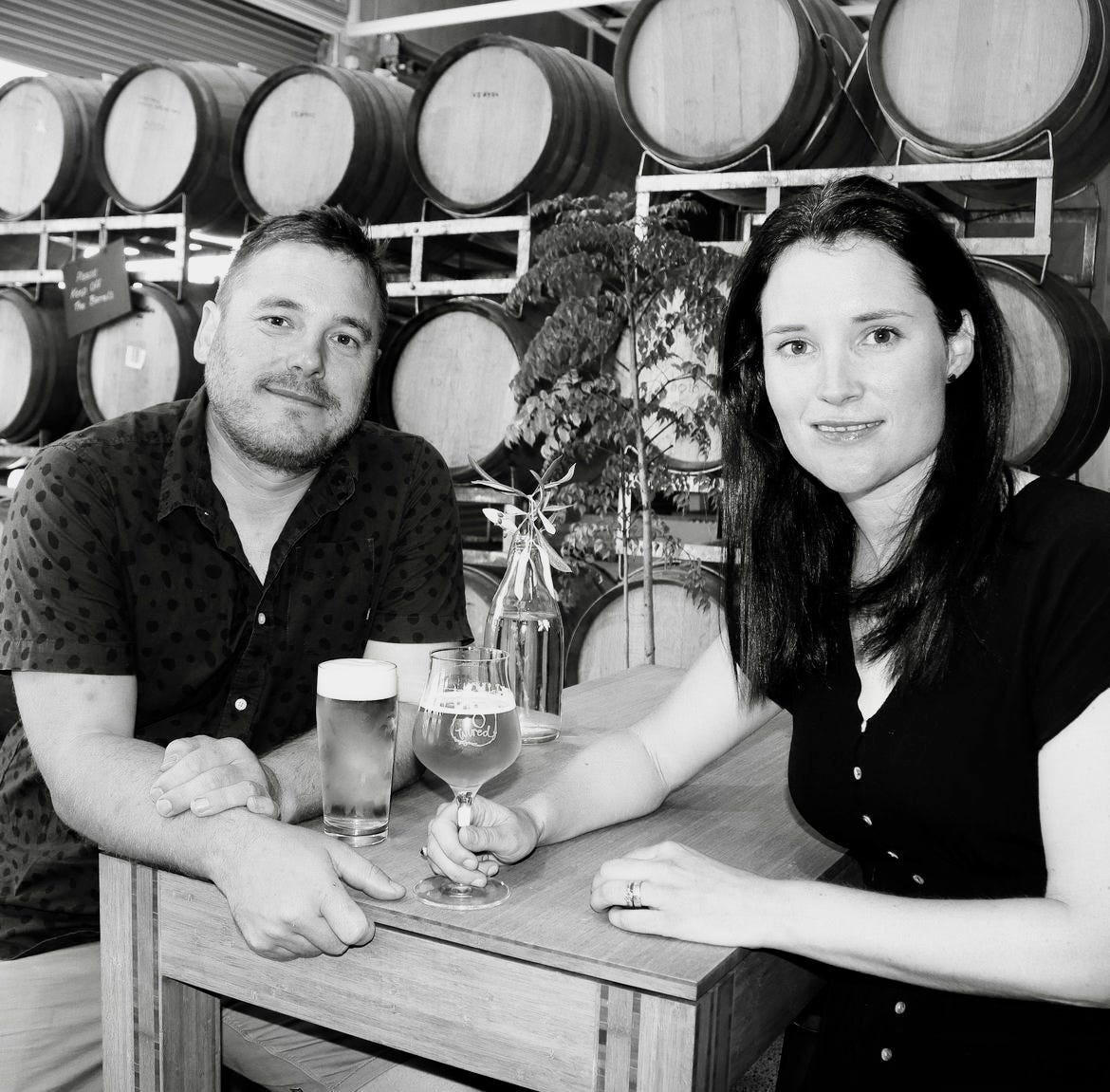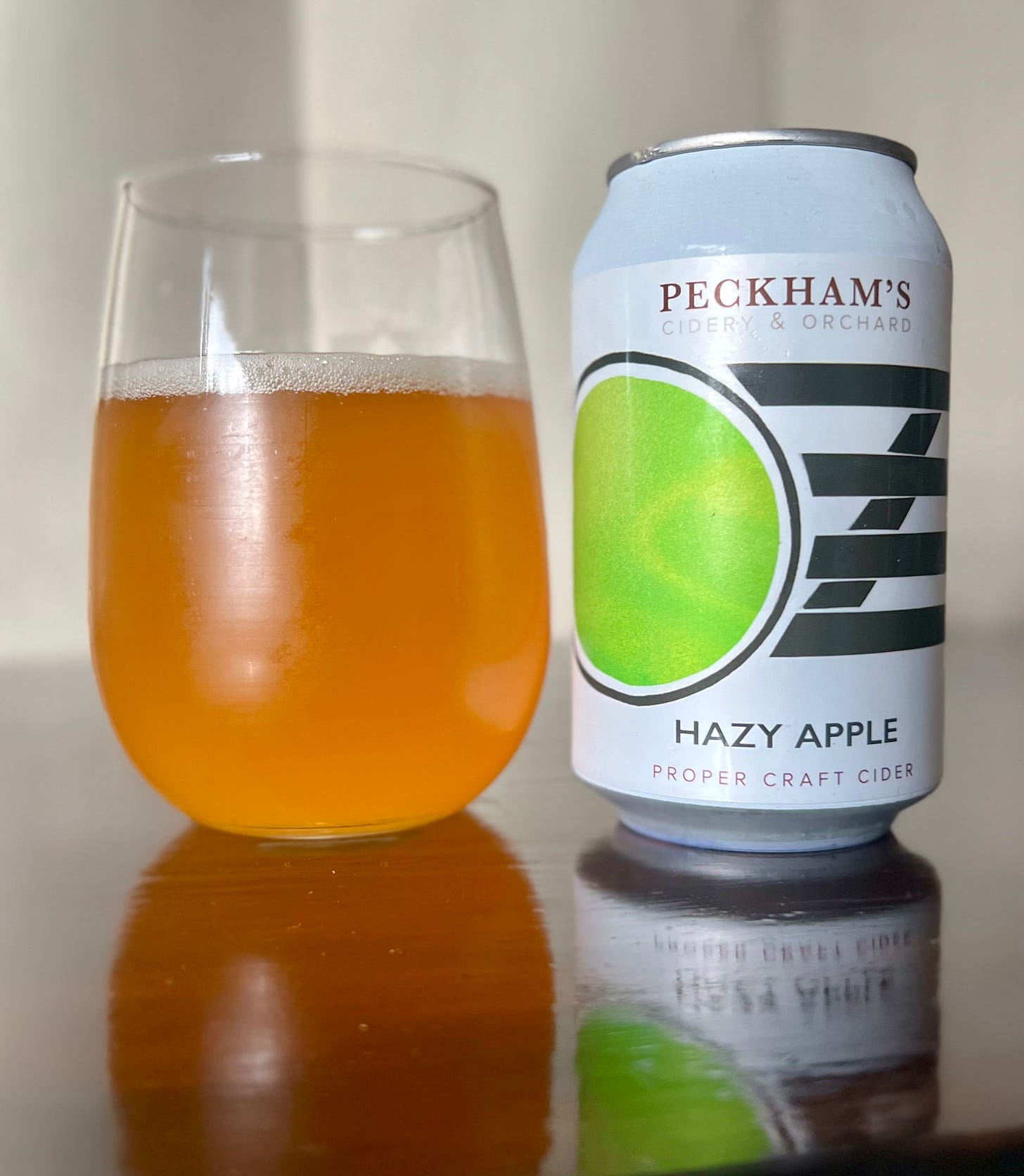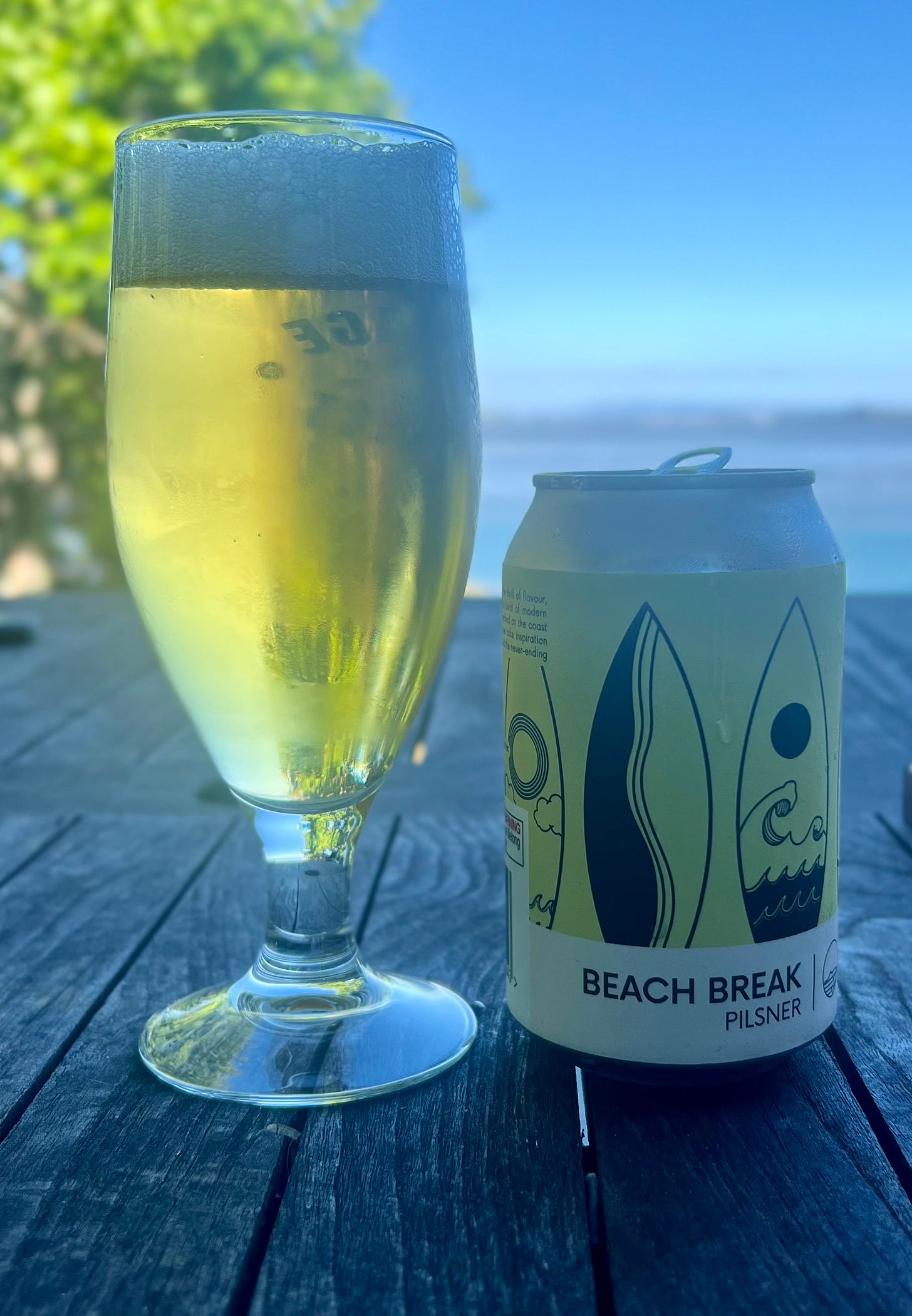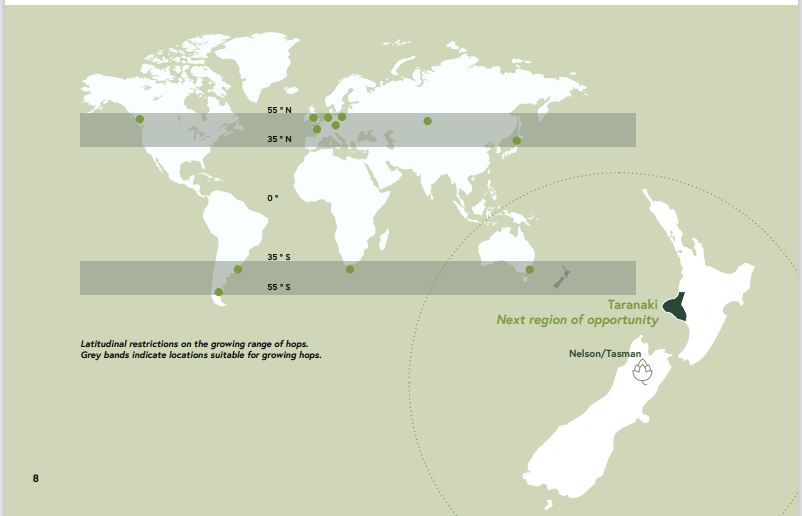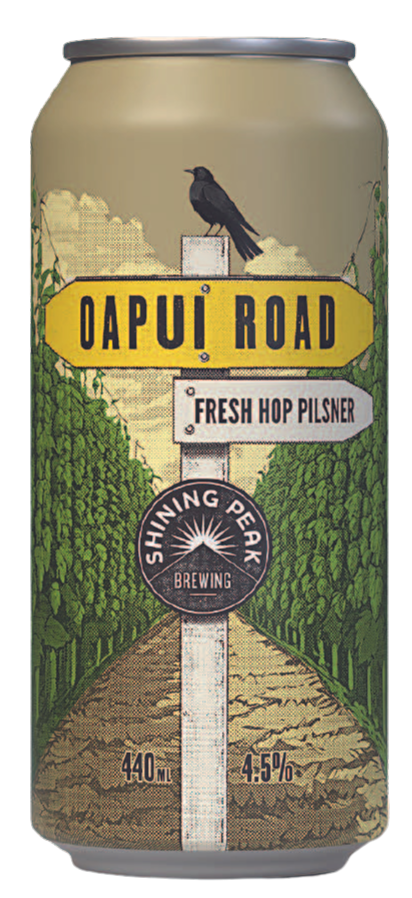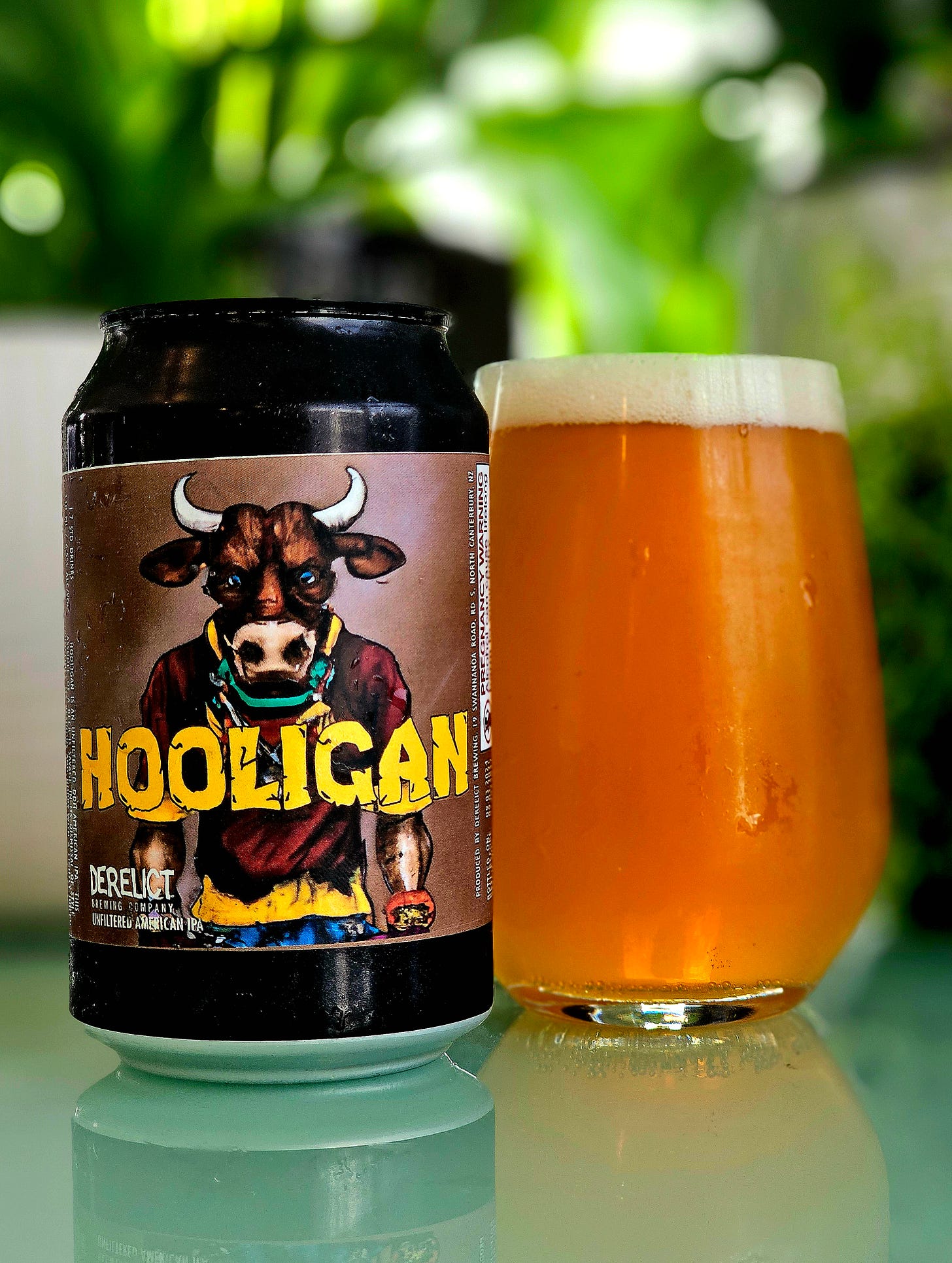8 Wired for sale
Time to move on for owners of NZ's Champion Brewery. Why hops are popping up all over the country. 13 of the best beers of 2024, so far. Has craft beer jumped the shark?
Happy Easter beer fans!
We start today with an in-depth look at why 8 Wired owners Soren and Monique Eriksen are selling their multi-award-winning brewing.
I’ve also got the first tranche of “beers of the year” and a look at new hop-growing regions in New Zealand.
But we’ll kick off with the shocking news that 8 Wired Brewing is up for sale.
Fear not, there's good reasons for it, with Soren and Monique wanting a change of pace in their lives and to potentially travel, including spending time back in Soren's native Denmark.
New Zealand's champion brewery is based in Warkworth and produces almost 500,000 litres per year, and has Barrelworks, a bar and barrel room in nearby Matakana.
Eriksen said that after 15 years of hard graft, it was time for a change, but he is in no rush to sell the brewery, suggesting it could take up to a year to complete the sale and he is happy to work alongside the new owners, or even retain a minority stake.
“While we’re proud of how far we’ve come, we’re also excited about the potential for new growth and innovation. That’s why we’re exploring the possibility of new ownership to bring in fresh energy and expertise to drive 8 Wired to the next level.
“From a family perspective, we’re excited about the prospect of exploring new endeavors, but we’re also deeply attached to the brewery and are committed to ensuring its continued success. Selling isn’t a decision we’re taking lightly, and we’re considering all options with care and consideration.”
8 Wired Brewing | NZ’s Champion Brewery for Sale! | LINK Business Brokers New Zealand
Eriksen told Pursuit of Hoppiness that the family were also thinking of going to Denmark to live for a year or two. His children — all born in New Zealand and aged 3 to 13 — have dual citizenship, but under Danish law children born abroad have to apply to retain their Danish citizenship before the age of 22.
So going back and learning the language would be an important factor if they were going to make that decision, he said.
“I don't know how it works exactly, but they will have to show some kind of connection to Denmark and that will mean speaking the language. We're not certain about doing that, it's about having that option, as right now we just can't pick up and leave.”
More importantly, Eriksen indicated that he and Monique needed a change after working together in the business for 15 years — and as many small business owners can attest, that means 15 years of being fully committed.
“We've been doing it for 15 years and I've never done anything in my life for 15 years before, and after four years of Covid and post-Covid, and recession, it has taken a mental strain as well.
“And running a business with your spouse has its plusses and minuses but it can be stressful at times.”
Eriksen sees plenty of potential buyers, from brewers who might want to step up, or people who have run other small businesses and who “know the supermarket game and distribution”.
“I'm happy to stick around as long as needed, and train anyone to fill my shoes, and we're also happy to retain a minority shareholding, and work behind the scenes as long as the new owner steers the ship.”
The taproom side of the business would also suit someone with hospitality experience.
“There's a lot of scope to improve Barrelworks and make more of it because we're not hospo people — it's all about the beer for us. So it could suit someone who knows how to run hospitality, or perhaps they already have a few venues in which case they can also sell the beer so there would be an immediate upside.
“But we're not in any rush, we want to make sure it's done right and goes to the right people.”
He also thought the time was right for some consolidation in the brewing industry, with potentially a contract brew brand taking it on and brewing their own beer alongside 8 Wired to maximise the brewery footprint.
“One thing's for sure, there's too much stainless steel under-utilised in New Zealand. If you take a birds-eye view of the industry there's way too much stainless in terms of capacity.”
The main thing is that 8 Wired's legacy continues.
“8 Wired is our life's work and we want to pass it on to the right people that can take it to the next level, and we will do everything we can to ensure its success in the future.”
8 Wired is the second brewery to go on the market this year after Boneface in Upper Hutt.
Last year, Epic was sold to Hancock's Wines and Spirits and The Russell Group after it went into liquidation.
Beer Cider of the Week
The 8 Wired sale brings to mind the recent sale of Peckham’s. Totally different circumstances of course, as Peckham’s was sold following the death of founder Alex Peckham … but it’s more about the desrie to find someone to continue the legacy, which Peckham’s did with the sale of the brand to Jody and Lois Scott.
And since it’s also cider apple harvest time, so I thought I’d break ranks and talk about a cider, albeit one which has a tangential connection to beer!
The haze craze in beer is well-known, but what’s a hazy apple cider?
In this case, it means unfiltered, which means more of that great flavour stays in the can rather than being lost to the filtration process.
Scott has stayed true to the Peckham’s tradition — and this is a trad cider — but in this case with the application of a modern tweak. The cider has that distinctive “rural” aroma — a little funky — from the wild ferment, but the sweet apple goodness sweeps that away and it finishes nicely off-dry and spicy. Highly recommended.
And of course you can get this at select New Worlds, your home of craft beer (and cider) and strong supporters of this newsletter.
Beers of the Year so far
As has become my thing every three months I look at the best beers I’ve enjoyed so far. The first quatrter of 2024 has been very good and it was hard to rank these in order:
Hop Federation Between the Lines Cold IPA — Everything I want in a beer, Hopping, popping, goodness. The best example of a Cold IPA in NZ so far.
Duncan’s Mentor Mentor Pastry Stout — Such depth and complexity and made-for-sharing-ness in this big and beautiful beer.
Garage Project Toru — Strictly I had this last year but it was Christmas and this newsletter was on holiday, so you never got to hear about it. If you find one of these wild ferment beauties, buy it.
Parrotdog Bright IPA — Crystal clarity in its looks but also in execution where the juicy, fruity hops stay tightly-tuned.
Black Sands Corrido Mango Chilli Lime Sour — The best sour of the summer, without a doubt. All the flavours are distinct yet in harmony.
Small Gods Arms Race — A tribute to Pliny The Elder that’s as good as they come if you want big, bold and structured bitterness.
Three Sisters Wild Thing — Brewed with Froth Tech’s Wilding yeast and hopped with Citra for a tart lemony refresher at just 3.2% ABV.
Pacific Coast Beach Break Pilsner — Stunning how much flavour is crammed into this super-light, unbelievably clean 4% pilsner.
Heyday Cherry & Balsamic Sour — palate-shifting, mind-bending amazement; stunning flavour combo.
Waitoa Brightside Non-Alc Hazy IPA — Another great non-alc beer hits the shelves. Really clean and hoppy.
Urbanaut First Press Passionfruit and Lime Hazy IPA — Huge sweet flavours offset by a gentle tartness makes for a delightfully complex hazy IPA.
Laughing Bones Bone Dry Brut XPA — The driest of dry XPAs, supported well by the Nectaron hop oils.
Emerson’s Grey Area 5.1 Cream Ale — The beer that surprised me most so far this year in that it tasted way more interesting than the style suggests.
Can AI make your beer taste better?
An intriguing piece of research in Leuven, Belgium, popped up this week — essentially showing that machine learning can be applied to beer, tweaking certain chemicals to make it taste better.
Professor Kevin Verstrepen gathered a tasting panel of 16 who sampled and scored each of the 250 beers for 50 different attributes, such as hop flavours, sweetness, and acidity – a process that took three years.
The researchers also collected 180,000 reviews from review platform RateBeer, finding that while the appreciation of the beers was biased by features such as price, the ratings and comments relating to other features — such as bitterness, sweetness, alcohol and malt aroma — correlated well with those from the tasting panel.
The team then built models based on machine learning – a form of AI – to predict how a beer would taste based on its composition and then “spiked” existing commercial beers it with substances flagged by the models as being important predictors of overall appreciation — such as lactic acid and glycerol.
The study noted that some compounds, often considered undesirable, could enhance beer if used in lower concentrations.
Verstrepen said their biggest application could be in tweaking non-alcoholic beers to make them better.
Hops spreading like weeds
Given that hops were once referred to as a “pernicious weed” it’s no surprise to see them spreading like, well, weeds.
We’ve seen an increase in hop-growing areas around New Zealand in recent times, from Garston in Southland, to Taranaki and up to Kerikeri. There are also trials underway in Central Otago.
It’s always been the case (and will remain so) that the Nelson-Tasman region is the primo growing area as it has the right combination of lots of UV in summer, cold enough in winter, and not too much wind.
I was also under the assumption that latitude played a part in Nelson’s optimal status … and to an extent it does. And then I saw the following map on a report into hop-growing in New Zealand by Venture Taranaki and for the first time realised how much Aotearoa fits into the desirable latitude range:
That is, all of NZ.
What surprises me about this map is how much of North America could be used to grow hops, but how little is actually needed, plus how tight the hop-growing region in Australia is.
Given that everywhere in New Zealand is at the right latitude, the rest of it comes down to wind and winter temperatures.
Do you recall the report last year detailing the towns in New Zealand with the most sunshine hours? Lake Tekapo came out on top, ahead of Richmond, in Nelson. The sunniest North Island town, ahead of always-sunny Blenheim, was New Plymouth.
The amount of sunshine in Taranaki is one of the reasons Venture Taranaki is encouraging the exploration of hop-growing in the region. Sun, good soil and reliable rainfall offers a head start for hops, but Taranaki does suffer when it comes to other key hop-growing factors: wind and cold days.
In theory, there are enough days below 7C in the inland part of the region, but there’s way too much wind, so shelter belts would be needed to protect vulnerable hops.
But there’s enough upside to see two gardens in the region, Quarter Acre Hops based in Tikorangi and the Verry family farm in Tarata. Both towns are on the northern side of Mt Taranaki, with Tarata more inland.
After using some Tarata-grown Nelson Sauvin last year, Jesse Sigurdsson of Shining Peak, made a road trip to Tarata to pick up fresh Riwaka hops from his friend Tim Verry.
“The Riwaka is already smelling pretty amazing,” Sigurdsson told me, adding he was grateful for the arrival of the harvester after helping hand-pick the hops last year. He added that Verry had been getting advice from established hop grower Brent McGlashan, of Mac Hops.
Shining Peak are making Oapui Road Pilsner with the Tarata Riwaka hops, and will also make their traditional Nelson Sauvin fresh hop beer, Gung Ho!
Three Sisters will be making four fresh hop beers with hops from Quarter Acre.
This brings me to yet a another developing hop-growing area in North Canterbury. Emporium did fresh hop beers last year with hops grown at Okuora Farms — a former sheep and beef run on the banks of the Hurunui River near Cheviot.
The Press reported that Okuora Farms owners John and Maury Leyland Penno set out four years ago to use land outside Canterbury’s traditional dairy farming — and climate data gave them a lead, John said.
Niwa suggested the climate in North Canterbury was very similar to that of Motueka in the 1970s, as climate change prompted warmer days, he said.
“Essentially crops that could be grown in Motueka in the 1970s, there’s no reason why they can’t be grown in North Canterbury today.”
As well as a hop garden they are growing apples, pears and cherries.
Dusty’s Beer of the Week
Hooligan is a 6.5% DDH American IPA from Derelict Brewing, jacked up on HBC586, Galaxy, Nectaron & Citra. There’s big notes of grapefruit, pineapple & pine upfront, followed by orangey marmalade as it warms. A resiny mouthfeel and caramel malt backbone complete an outstanding IPA that pulls no punches! Hoppy Easter Hopheads!
Don’t be a mug, join the club
Have you ever wanted to join a club where all you do is drink beer? Well if you’re in Auckland, you’re in luck! Next week, brewpub-in-planning Twofold is launching memberships to its Mug Club. Members get a range of benefits, perhaps the most coveted being a personalised mug behind the bar. Love a beer? Join the club.
Is Craft Beer Cringe Right Now?
I’ll leave you with food for thought over the Easter break, from Courtney Iseman, and with a trigger warning of sorts: if you’re a bearded male, aged 40-50, you might find some of this distressing!
“I think the problem for the last 10 to even 20 years is that the craft beer industry focused too much on elitism,” says Aaron Goldfarb, drinks writer and author of Dusty Booze: In Search of Vintage Spirits. “IPAs that were too bitter for ‘normal’ people to drink. Beers you had to wait in line to obtain. Inside (and often childish/crass) jokes galore on [labels]. The stereotype of a bearded dude crushing high-ABV cans…was very much true for many years and if you didn’t want to be that guy, you almost certainly loathed that guy. And now that guy is in his 40s or even 50s — if he’s still into that lifestyle, he’s become akin to the old man in skinny jeans at the nightclub.”
Is Craft Beer Cringe Right Now? - InsideHook
Enjoy your Easter Break and catch you next week!
hoppiness.co.nz






